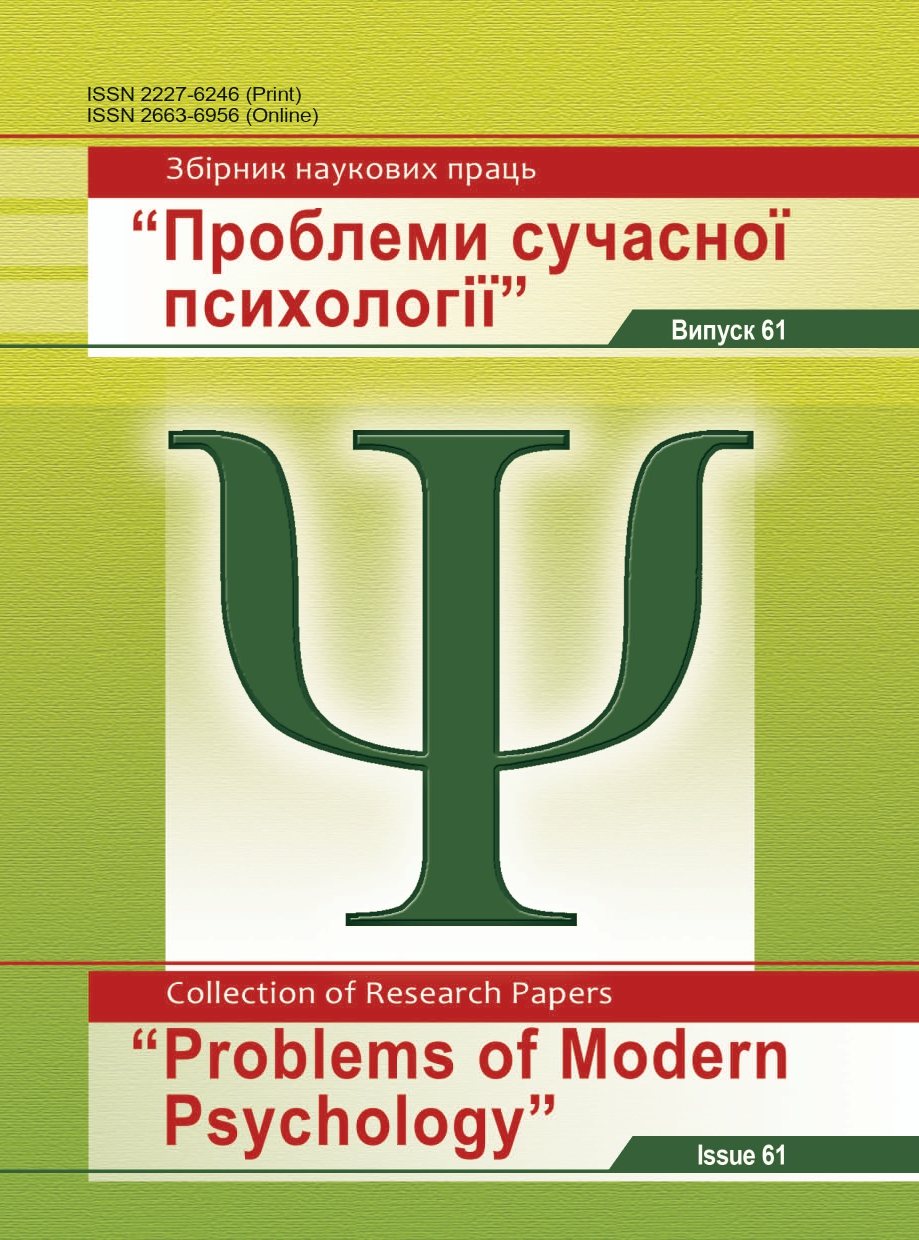The Ways of Development of Students’ Creative T hinking by Actualizing their Auditory Differential Sensation
DOI:
https://doi.org/10.32626/2227-6246.2023-61.74-95Keywords:
creative thinking, auditory differential sensation, emotional attitude, Primary and Secondary video materials, understanding video materialsAbstract
The aim of our research is to show the ways of development of students’ creative thinking by actualizing their auditory differential sensation; to propose three stages of perception and understanding of video resources.
Methods of the research. The following theoretical methods of the research were used to solve the tasks formulated in the article: a categorical method, structural and functional methods, the methods of the analysis, systematization, modeling, generalization. The experimental method was the method of organizing empirical research.
The results of the research. Perception and understanding of video resources has some stages: at the stage of perception, as evidenced by the review of the literature, finding out a general idea about the text, by implying of which it is formed (usually we mean about the volume, grammatical correctness), which forms a vague forecast of what the text will be about and by what elements it forms interest of students. The success of perception, in our opinion, is represented by the activity of reception and the accuracy of the recipient’s expectations according to this text. Then we’d like to show criteria of perception and understanding of video resources: reception activity, which is determined by the attention to the video material or by ignoring it. The reception indicator is the amount of video material that the student watched. Such activity is the initial stage of emotional identification (surface emotional identification), as it was arisen on the basis of an emotional reaction, such as: “it is interesting” – “it is not interesting”; the accuracy of expectations, which reflects a perceptual forecast regarding video materials and it is verified by the indicator of the coincidence of dominants in the process of secondary perception of video materials. In such a way we mean the reactions to a certain fragment of video material and its complete primary viewing. In turn, expectations precede interpretations, forming presuppositions for interpretation. They can be considered a superficial interpretation.
Conclusions. It has been proven that at the stage of emotional identification secondary video material is supplemented with probable emotional connotations, awareness of the author’s assessment and formation of his/her own, as well as their correlation. We consider the criteria of this stage to be: 1) consistency of emotional attitude of students, which is expressed through the correspondence of connotations in the Primary and Secondary video materials; the percentage of connotations of Secondary perception that coincided can be considered an indicator of connotations; 2) adequacy of assessment, such as the ratio of the assessment of the difficulty of understanding video materials with the indicator of adequacy of its interpretation.
Downloads
Published
How to Cite
Issue
Section
License
Copyright (c) 2023 Mykhalchuk Nataliia, Komarnitska Liudmyla

This work is licensed under a Creative Commons Attribution-NonCommercial 4.0 International License.
Copyright
The Editorial Board has the full right to publish original scientific papers containing results of theoretical and experimental research works which are not currently subject to review for publication in other scientific editions. The Author shall transfer to the editorial board of the Collection the right to spread the electronic version of the paper, as well as the electronic version of the paper translated into English (for papers originally submitted in Ukrainian and Russian) by all kinds of electronic means (placement at the official website of the Collection, electronic databases, repositories etc).
The Author of an article reserves the right to use materials of the paper, without approval with the editorial board and the founders of this Collection: a) partially or fully, for educational purposes; b) for writing own dissertation papers; c) for preparation of abstracts, conference reports and presentations.
The Author of an article can place electronic copies of the paper (including the final electronic version downloaded from the official website of the Collection) at:
- personal web resources of all Authors (websites, webpages, blogs etc.);
- web resources of the institutions where the Authors are employed (including electronic institutional repositories);
- non-profit public access web resources (for example, arXiv.org).
But in all cases, it is obligatory to have a bibliographic reference to the paper, or a hyperlink to its electronic copy placed at the official website of this Collection.






